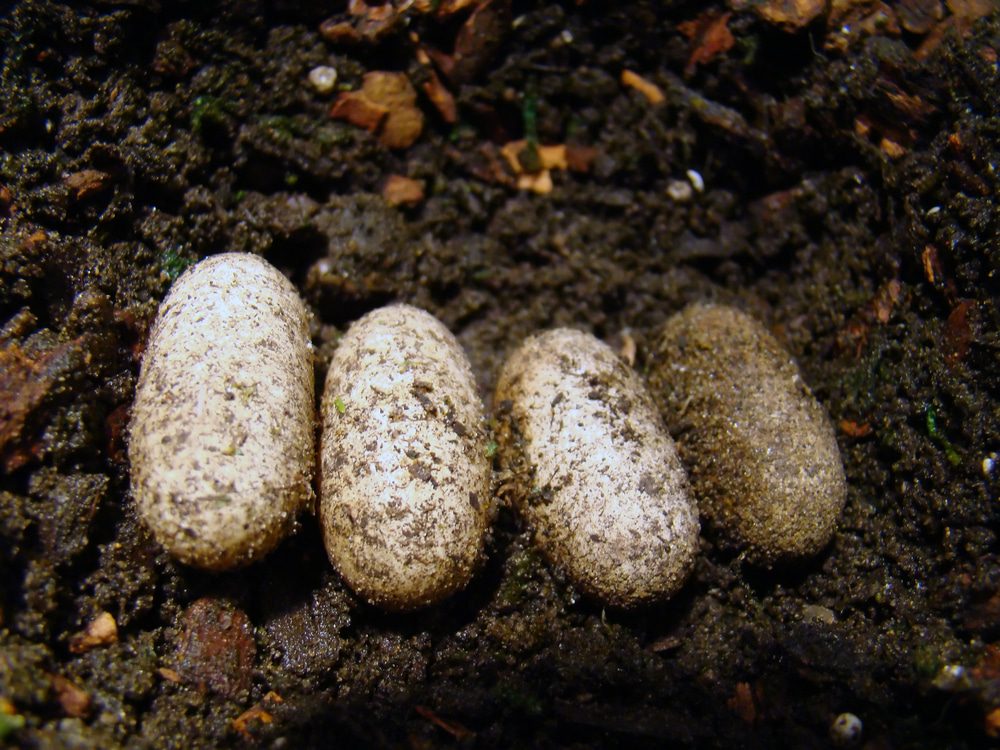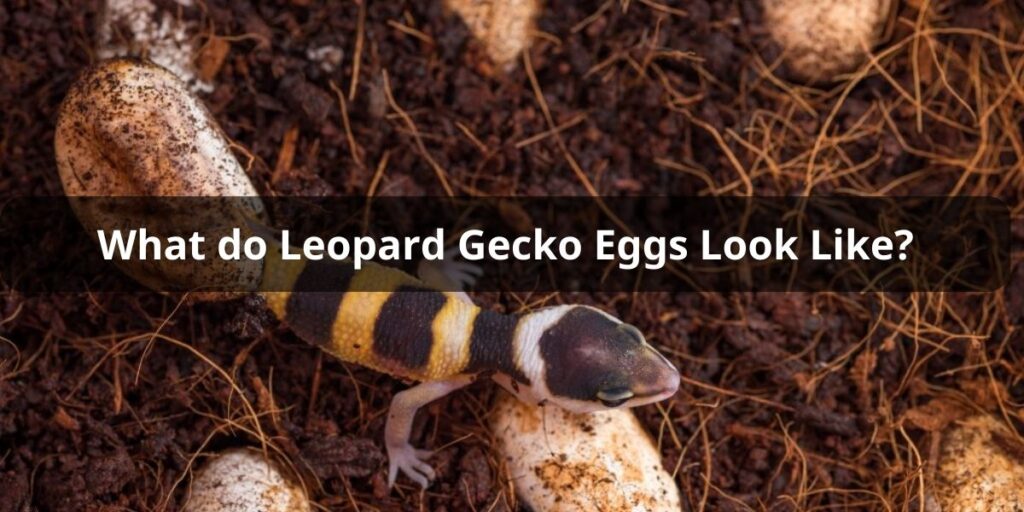Leopard geckos are a popular pet lizard known for their docile nature, ease of care, and unique markings and colors. As reptiles, leopard geckos reproduce by laying eggs rather than giving live birth. The eggs of a leopard gecko have some distinct characteristics that help identify them. Here is an in-depth look at what leopard gecko eggs look like.
Appearance of Leopard Gecko Eggs
Leopard gecko eggs are oval or elliptical in shape. They have a soft, leathery exterior shell that is slightly sticky to the touch. The eggs are approximately 3/4 to 1 inch long when first laid.
The color of leopard gecko eggs can vary. Most commonly they are white or off-white in color. However, they can also exhibit light pink, yellow, or tan hues. The color depends on the genetics of the individual gecko.
The interior of the egg contains the developing embryo and yolk surrounded by albumen and membranes. It has a creamy off-white appearance when candled or examined.
Changes After Laying
Leopard gecko eggs change over time after they are laid. As the embryos inside develop, the eggs gradually increase in size up to around 1.5 inches long. The eggs become more elongated as well.
The color also darkens as incubation progresses. The eggs often take on a pale pink or orange hue eventually. This is from blood vessel development inside the egg. Veining may become visible on the surface.
Right before hatching, the baby gecko can sometimes be seen moving inside the egg. Cracks and pip marks will start to form as it breaks out of the shell.
Ideal Incubation Conditions
Leopard gecko eggs require specific incubation conditions to hatch properly:
- Temperature between 82-90°F. Ideal is 88-90°F. Temperatures over 91°F can be harmful.
- Humidity of 70-80%. High humidity prevents eggs from drying out.
- Incubation medium such as vermiculite, perlite, moist paper towels. This helps retain moisture.
- Enclosed incubator or container. This maintains stable temperature and humidity.
With proper incubation over 45-60 days, leopard gecko eggs will hatch out healthy baby geckos. Proper care after hatching is also critical.
What Happens if Eggs Are Not Viable
Not all leopard gecko eggs will be viable or develop normally. Unfertilized eggs, genetically defective embryos, and improper incubation can all lead to non-viable eggs. These eggs will typically:
- Stop developing or shrink in size.
- Develop a dent or cave in on one side as the contents shrivel.
- Turn opaque or mushy with no veining present.
- Give off an odor indicating rotting of the contents.
If eggs clearly fail to develop, they should be discarded to prevent bacteria growth. It is normal for some eggs in a clutch to not be viable.
What do Leopard Gecko Eggs Look Like?

In summary, here are the key things to know about identifying leopard gecko eggs:
- Oval/elliptical shape around 3/4 – 1.5 inches long
- White, off-white, pink, yellow, or tan coloration
- Soft, flexible, and slightly sticky leathery shell
- Creamy interior containing yolk and embryo
- Darkens and develops veins during incubation
- May dent or cave in if non-viable
- Hatches after 45-60 days of proper incubation
Proper identification and incubation of eggs can lead to big rewards – hatching out healthy baby leopard geckos! With a little experience, their unique eggs become easy to recognize.
Conclusion
In conclusion, understanding the characteristics of leopard gecko eggs is essential for any reptile enthusiast or breeder. These distinctive eggs, with their oval shape, varying colors, and soft leathery shells, offer valuable insights into the reproductive cycle of these fascinating creatures.
FAQs
What should I do if I discover leopard gecko eggs in the enclosure?
If you find leopard gecko eggs in the enclosure, carefully remove them to prevent damage or contamination. Place the eggs in an incubator set to the appropriate temperature and humidity for leopard gecko eggs. Monitor them closely and consult a reptile expert for guidance.
Can you describe the incubation process for leopard gecko eggs?
Leopard gecko eggs require consistent temperature (around 82-88°F) and high humidity during incubation. They are typically incubated in a vermiculite or perlite substrate within a sealed container. Maintain stable conditions, and the eggs will hatch in approximately 45-60 days.
Are there any specific tools or methods for candling leopard gecko eggs?
Candling leopard gecko eggs involves using a gentle light source, like a flashlight, to illuminate the egg in a dark room. Candling helps you observe the development of embryos. Avoid excessive handling, maintain cleanliness, and handle with care during candling.
What signs indicate that leopard gecko eggs are close to hatching?
Leopard gecko eggs nearing hatching may exhibit changes such as dimpling, veins becoming less visible, and the egg appearing slightly collapsed. Additionally, you may hear chirping or scratching sounds from inside the egg as hatchlings prepare to emerge.
How should I care for leopard gecko hatchlings once they emerge from the eggs?
Hatchlings require a suitable enclosure with appropriate substrate, hiding spots, and proper temperature and humidity. Offer them small, appropriately sized insects, provide clean water, and ensure they have access to calcium supplements for healthy growth. Handle hatchlings gently and minimize stress during their early days.



